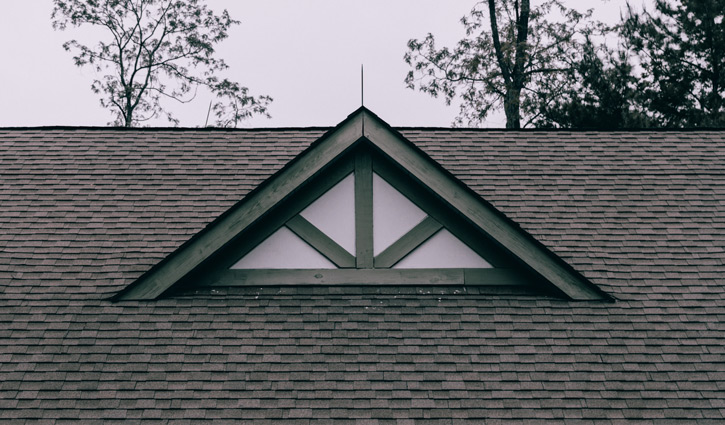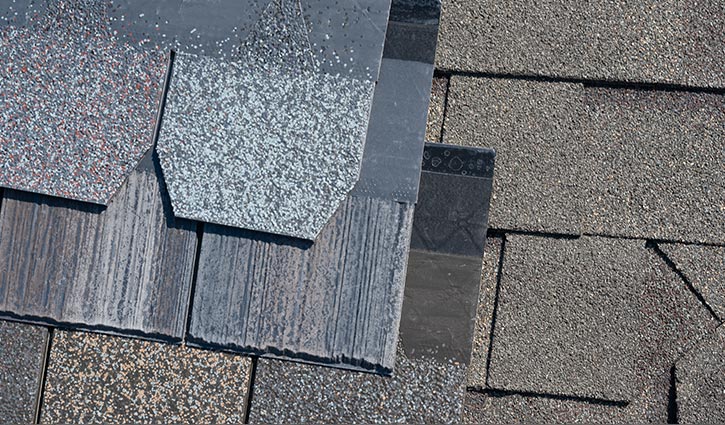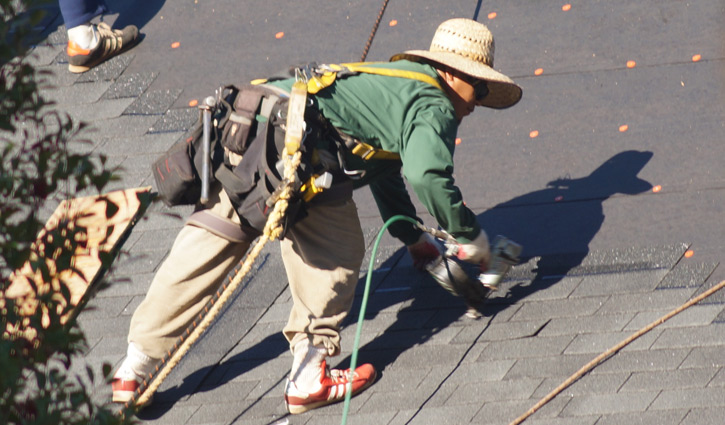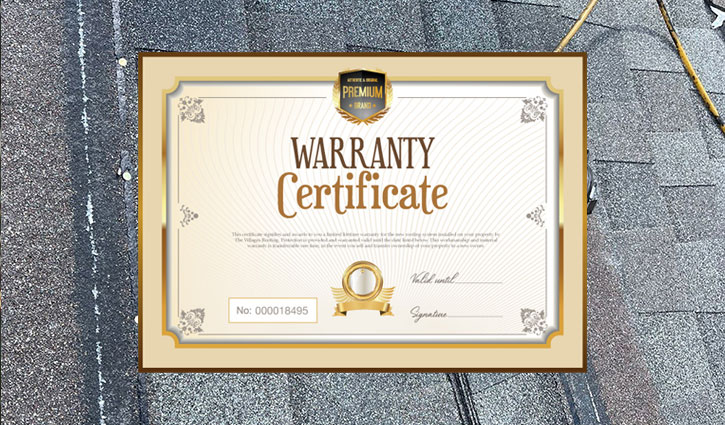Are you looking for a roofing material that combines durability, affordability, and style? Look no further, as composition roofing offers all of those things. This popular choice among homeowners provides a wide range of benefits, making it an ideal option for new construction and roof replacement projects. In this blog post, we’ll answer “What is composition roofing?” from its manufacturing process and key features to the different types of composition shingles and how they compare to other roofing materials. 
Key Takeaways
- Composition roofing is a popular choice due to its durability, affordability, and style options.
- It comes in 3 types – 3-tab, architectural, and designer/luxury – offering varying performance levels, aesthetics & cost.
- Professional installation & regular maintenance are essential for the longevity of composition roofs, with most lasting 20-30 years, though some warranties extend up to 50 years.
So, what sets composition roofing apart from other roofing materials such as metal, wood, or tile?
Understanding Composition Roofing Material
Composition roofing, also known as asphalt shingles or composite shingles, is made from a combination of tar, fiberglass, and a mat. This type of roofing material, specifically an asphalt shingle roof, has gained popularity due to its durability, affordability, and variety of style options.
Let’s dive into the manufacturing of the composition roof material and features of this shingle.
The Material Manufacturing Process
In a roofing system the shingle is the only of the roof parts exposed to the elements, thus it’s important to understand how it is produced. The production of composition roofing includes the following steps:
- Coating fiberglass with mineral fillers such as limestone, calcium carbonate, and dolomite to enhance waterproofing and durability.
- Layering asphalt onto the base material to act as a water-shedding agent and help keep the granules in place.
- Adding granules to the surface of the roofing material for additional weather resistance and longevity.
These steps contribute to the overall quality and performance of the roofing system, particularly in the case of composition roofing.
Finally, ceramic granules are applied to the shingle, offering further protection against the elements. These granules provide a barrier against harmful UV rays and excess heat, further enhancing the performance and lifespan of the composition roof.
Key Features of Composition Roofs
One of the main attractions of composition roofs is their long lifespan. With proper installation and maintenance, a very high-quality composition roof can last between 40 to 50 years. This longevity can be attributed to various factors, including the quality of the roofing material, correct installation, and the utilization of superior roofing accessories.
Another advantage of composition roofs is their cost-effectiveness. They are more affordable than other materials, have good durability, and often come with warranty coverage. Homeowners also have a wide selection of styles to choose from, including 3-tab shingles, architectural shingles, and premium designer or luxury shingles.
Types of Composition Shingles
As previously mentioned, there are three main types of composition shingles: 3-tab, architectural, and designer or luxury shingles. Each type offers varying levels of durability, aesthetics, and cost.

Recognizing the variances among these shingle types can assist you in choosing the most suitable roof for your home.
3-Tab Shingles
3-tab shingles are the most basic and affordable option for composition roofing. With a single-layered design and distinct tabs, these lightweight shingles cost around $90 per square foot. However, their affordability comes at the expense of a shorter warranty period, typically between 20 and 25 years. When considering a composition roof, cost is an important factor to keep in mind, especially when comparing it to other roofing options.
While 3-tab shingles may be an affordable option for rental properties or budget homes, bear in mind that their lightweight design might make them vulnerable to high winds, and their limited aesthetic options might not appeal to all homeowners.
Architectural Shingles
Architectural shingles, on the other hand, offer a more attractive and durable option compared to 3-tab shingles. These shingles have the following features:
- They are thicker and have a longer lifespan, typically around 25 to 30 years.
- They have a more substantial look.
- They provide improved durability.
- They cater to homeowners seeking a balance between aesthetics and performance.
Although architectural shingles might be slightly pricier, their advantages generally justify the price disparity. They are available in regular and upgraded grades, with upgraded shingles providing a more robust and visually appealing option.
Designer or Luxury Shingles (Premium)
For those seeking the highest quality and most visually striking option, designer or luxury shingles are the way to go. These premium shingles boast double the weight of 3-tab shingles, providing extra strength against impact and tears. They also come in various colors and designs, allowing homeowners to achieve a unique and personalized appearance for their homes.
While designer shingles come at a higher price, around $180 per square foot, their exceptional durability and wide range of design choices make them a valuable investment for those looking to make a statement with their roof.
Comparing Composition Roofing to Other Materials
When comparing composition roofing to other materials such as metal, wood, or tile, it’s clear that composition roofing offers several advantages. In terms of cost, composition roofing is generally more economical, making it an attractive option for homeowners on a budget.
Also, composition roofing is recognized for its versatility, offering a range of styles, colors, and textures. This flexibility makes composition roofing suitable for homes of any shape and style, unlike some other materials that may have limited design options or require specific architectural features.
Installation and Maintenance of Composition Roofs

The installation and maintenance of composition roofs are relatively straightforward, making this roofing even more appealing to homeowners. However, conducting regular inspections and carrying out necessary upkeep is essential to ensure the roof’s longevity and performance.
Although composition roofs are typically straightforward to install and maintain, it’s important to seek help from a professional roofing contractor for correct installation and to address any issues that may occur over time, such as leaks, water damage, or shingle displacement.
Factors Affecting Composition Roof Costs
As with any roofing project, several factors can affect the overall cost of a composition roof. These include:
- The type of shingle
- House size
- Slope
- Removal of old roof
- Underlayment
For example, a larger home with a steep slope may necessitate additional materials and labor, resulting in higher installation costs.
When planning your composition roof replacement, these factors should be considered to make sure you choose the appropriate materials and allocate your budget effectively for the project.
Lifespan and Warranty of Composition Roofs

The lifespan of composition roofs can vary greatly depending on the type of shingle and environmental factors. Here are some general guidelines:
- Lower-quality composition roofs typically last around 20 years
- Higher-quality materials can last up to 50 years
- Weather conditions, solar exposure, and proper installation also play a significant role in determining the roof’s longevity
Also, many superior composition roofs come with warranties that can extend for several decades, with a few even offering lifetime warranties. This warranty coverage provides homeowners with peace of mind, knowing that their investment is protected should any issues arise.
Assessing When to Repair or Replace Your Composition Roof
Deciding whether to repair or replace your composition roof depends on several factors, such as the extent of damage, the age of the roof, and budget considerations. For instance, if only a few shingles are damaged or missing, a simple repair may suffice. However, if the roof is nearing the end of its lifespan and shows signs of extensive damage, a full replacement may be the most cost-effective option.
The final decision should rely on a meticulous assessment of the roof’s condition, considering the extent of the damage, the age of the roof, and the resources allocated for the project.
Regional Considerations for Composition Roofs
When choosing a composition roof, you should consider your area’s particular climate and weather patterns, along with local building codes and regulations. For example, composition roofs should be able to resist:
- Hail
- Strong winds
- Precipitation
- Snowfall
- Extreme temperatures
This will ensure optimal performance and longevity in various regions.

Adhering to local building codes and regulations is also crucial, as these standards and criteria help guarantee safety and acquire the necessary permits and approvals for your roofing project.
Environmental Impact of Composition Roofing
The environmental impact of composition roofing is a concern due to its reliance on non-renewable resources and the potential for waste generation. Composition shingles are made from materials such as:
- Paper
- Minerals
- Fiberglass
- Tar
- Other petroleum compounds
These materials are not easily renewable.
Nonetheless, these concerns can be alleviated by recycling old shingles or choosing environmentally friendly alternatives. Recycling programs for composition roofing materials are available, while some manufacturers also produce environmentally friendly alternatives that use sustainable resources or have a lower environmental impact.
Summary
In conclusion, composition roofing offers homeowners a wide range of benefits, such as affordability, durability, and style variety. With various types of composition shingles available, it’s essential to understand the differences and select the right option for your home and budget. Additionally, considering regional factors like climate and local building codes, as well as environmental implications, can help ensure a successful and long-lasting roofing project.
By carefully evaluating your needs and preferences, you can make an informed decision and choose the ideal composition roofing solution for your home, providing lasting protection and value for years to come.
Frequently Asked Questions
Is a composition roof the same as shingles?
Composition roof shingles and asphalt shingles are the same thing and often used interchangeably. When someone references a composition roof, they are usually referring to a roof covered with asphalt shingles.
How long do composition roofs last?
Composite shingles can have a 25-50 year lifespan, significantly longer than asphalt roofing, which typically lasts 20-25 years.
What factors can affect the cost of a composition roof?
The cost of a composition roof can be impacted by factors such as the type of shingle, size of the house, slope, removal of old roof, and underlayment.
How does the type of shingle affect the lifespan and warranty of a composition roof?
The type of shingle used for a composition roof can significantly impact its lifespan and warranty, with higher-quality materials offering increased longevity and more extensive warranties.
What regional factors should be considered when selecting a composition roof?
When selecting a composition roof, it is important to consider the local climate and weather conditions, as well as any applicable building codes and regulations.